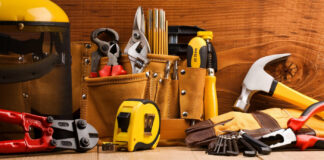
If you are a car owner, there could be situations and instances in which you make the wrong decisions about maintenance, driving style, repairs, etc. Since most cars are very different, the right ownership practices differ as well. However, there are some basic standards and rules every owner can follow and make their car more reliable and dependable in the long run. We should note that proper ownership usually comes with a larger price tag, but you should be prepared for the fact that owning a car is a pleasure and comfort, but not a cheap one. Without further ado, let’s get to the main tips and rules for properly maintaining your car.
Take care of the gearbox
The problem with gearbox issues is that they are almost always very expensive to fix, and a lot of the time they require not minuscule repairs, but for the replacement of the whole gearbox. If you have a sophisticated automatic, you cannot behave with it as you wish, there are certain guidelines you should follow. Now, depending on if the gearbox is ‘wet’ or ‘dry’, you should replace the fluids first and foremost. Secondly, if you aren’t driving a rally or race car, don’t overuse the ability to change gears aggressively. Regular cars are meant for regular driving, so don’t push the gearbox too hard.
Only push hard when the engine is warm enough
When it comes to pushing hard, limit yourself as much as possible. Hard overtakes, fast driving in the corners or track days should only be undertaken when your engine reaches optimal temperature. This is usually 80-100 degrees Celsius or 175-215 Fahrenheit. If an engine is put through strenuous tasks while it’s cold or below an optimal temperature, there is an increased risk for damage and engine failure. Let the car sit for a while, drive around at low speeds until the car is warm enough, and then you can push hard.
Don’t let it sit for too long

You might’ve heard this one before but cars aren’t meant to sit around, they’re meant to be driven. If a car sits for too long and is unused, some pipes and lines could get clogged with residue, dust, dirt, etc. It isn’t healthy for the car and even if you aren’t driving it daily, make sure to turn on the ignition every once in a while.
Refurbish, if necessary
Some owners have a tendency to completely neglect the repair and restoration needs for the interior. Most of the time people are super concerned about the engine, exhaust, the turbos, the ride but the seats, the steering wheel, dash, sun visors and even things like the A/C is completely neglected. This doesn’t do justice for the car and only speeds up its depreciation as well as makes it less fun and comfortable to drive. Replacement is expensive so sometimes it is much better to look into refurbishment or restoration of certain parts.
For example, leather or velour seats can be restored, the same applies for wooden, leather, plastic, or any other dashboards as well as the steering wheels. Look for services providers just like Woodensteeringwheels online and you can revive even the most troubled interior out there. This makes the car more exciting to drive and be in because the wheel won’t slip or be unpleasant to handle and everything will have that mint condition ‘glow’ to them.
Don’t wait for weird noises to just disappear

Some owners joke that there are always noises in your car. You can ignore the cheap ones but usually cannot go past the expensive ones according to them. Well, jokes aside, we strongly advise against living with certain sounds in your automobile. If you hear a strange clunk, whir, rattle, or any other noise that wasn’t there before – you should check it out. Even if it’s a small problem, if not taken care of, in cars they do tend to have a snowball effect. For example, a small issue with the brakes could cause the brake disc to brake, the brake pads to wear quicker, the hoses for brake fluid to rupture and lots more to be damaged around the wheel.
It’s much more serious in the engine where everything rotates, moves, and changes. One small break and one small particle can damage the entire insides of the engine. For example, if one of the gears break, the debris from the cogs could damage your whole transmission, so don’t leave it unattended!
Change the oils frequently
This is especially key and important for owners who are driving a performance car. Oil changes are important due to a number of reasons. First and foremost it is due to the fact that oil can deteriorate over time. Since it is a lubricant, you have to make sure it does its job well because if the engine isn’t lubricated enough, you can run into major troubles very quickly.
There are some articles that claim you need to change your oil every 3-5 thousand miles. Well, in all real-life situations, it’s enough to change it every 7-10 thousand miles, unless you drive a powerful engine (sporty or 300+HP), one with many cylinders (8 or more) as well as one which requires high maintenance. Frequent oil changes are important for the long-term health of the engine and the turbochargers.








